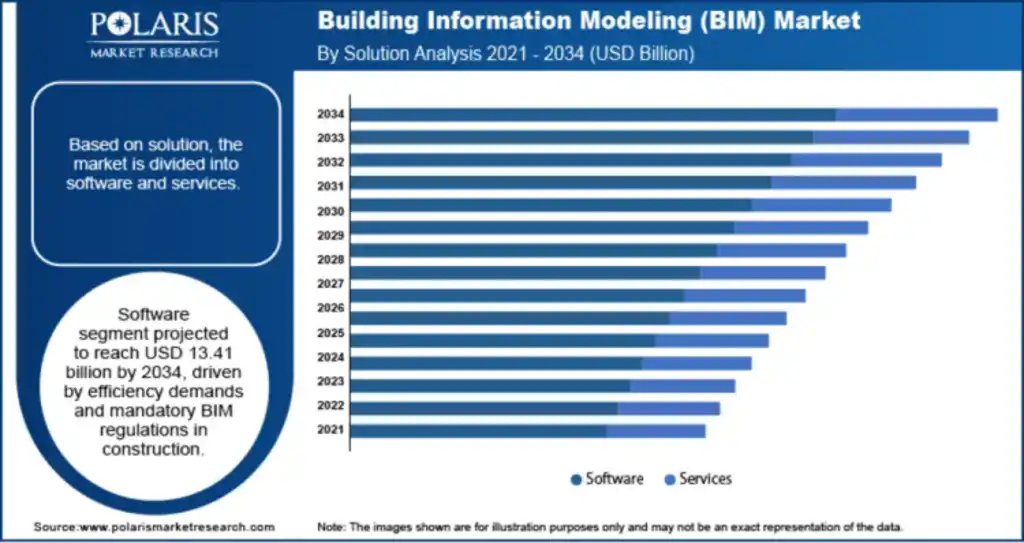The building information modeling (BIM) market, valued at $7.92 billion (€6.71bn) in 2024, is projected to grow to $21.06 billion (€17.88bn) by 2034. The market is projected to register a compound annual growth rate (CAGR) of 10.3% from 2025 to 2034.
This is according to a new report from Polaris Market Research. The market for building information modeling is being driven by mandates and government regulations, sustainability and green building certifications and
smart cities and urban infrastructure.
One of the most significant drivers of BIM adoption is the rising number of government policies that mandate its use in infrastructure projects. Countries like
the UK have made Level 2 BIM mandatory for all centrally procured government construction work. Similarly, Germany, France, China, India, and several Middle Eastern nations have launched national BIM frameworks or
digital construction strategies. These regulations have accelerated BIM adoption across public sector developments and is also influencing private players to follow suit to remain competitive and compliant.

The ability of
BIM to support energy modeling, material efficiency, and lifecycle impact analysis makes it an ideal tool for sustainable construction. With stricter environmental regulations and net-zero carbon goals becoming global priorities, BIM
enables architects and engineers to simulate energy consumption, daylighting, HVAC loads, and embodied carbon early in the design phase. In addition, BIM plays a key role in meeting green certification
requirements such as LEED, BREEAM, and WELL Building Standard.
The global shift towards smart cities and intelligent infrastructure is driving BIM adoption. Municipalities are using BIM to manage the entire lifecycle
of public assets. By integrating BIM with geographic information systems and IoT platforms, city planners can visualise and simulate the impacts of urban development in terms of traffic flow, energy
demand, water usage, and emergency response. BIM also allows for data-rich asset modeling, which is essential for predictive maintenance, urban resilience planning, and infrastructure investment analysis.
top image: shutterstock/Summit Art Creations